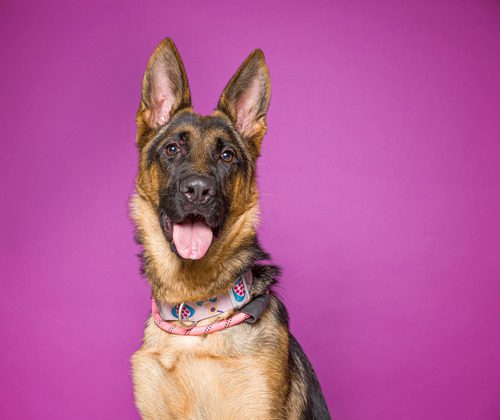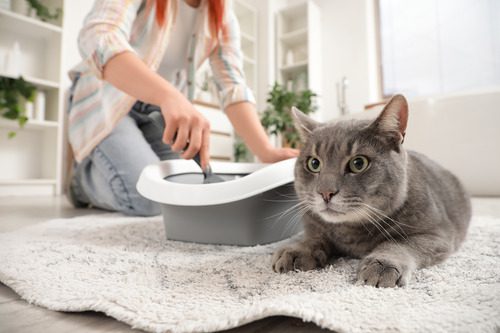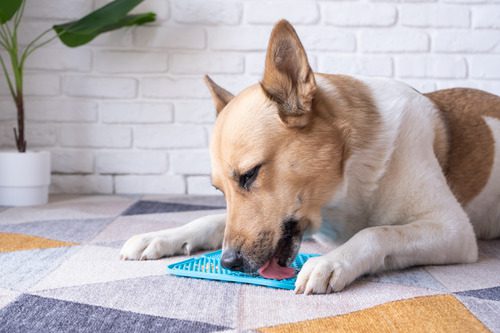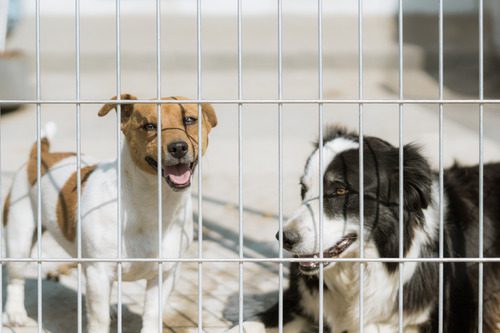Dog Dehydration: Causes, Symptoms, Treatment and Prevention
Dehydration in dogs can develop faster than many pet owners realize and it isn’t just a summertime concern. Whether it’s related to illness, activity level, or environmental conditions, dog dehydration can pose a serious health risk if left unchecked. While a dry nose or panting may not always indicate a problem, there are key signs every pet owner should know. In this blog, we’ll break down the causes, symptoms, treatment options, and prevention strategies for dog dehydration. If you’re concerned about your pet’s hydration, call one of our Best Friends Veterinary Hospital locations or book an appointment online today.

What Is Dog Dehydration and Why Does It Matter?
Dehydration occurs when your dog loses more fluids than they take in, disrupting the balance of water and electrolytes in their body. Dogs rely on water for every major bodily function, from regulating temperature to circulating nutrients. Even a modest drop in hydration can impair organ function and energy levels.
Many cases of dog dehydration are mild and treatable, but more severe dehydration can quickly become a medical emergency. Dogs cannot sweat to cool themselves like humans do; they regulate body temperature through panting, which increases water loss. If water isn’t replenished quickly, dehydration can progress and affect the kidneys, gastrointestinal system, and more.
Common Causes of Dog Dehydration
Dog dehydration doesn’t stem from a single source. Various factors can contribute, depending on your dog’s lifestyle, health, and environment. Understanding these causes can help you take preventative action.
Illness and Medical Conditions
Vomiting and diarrhea are two of the most common causes of sudden fluid loss. When dogs become sick, especially with gastrointestinal illnesses, they can lose significant amounts of fluids in a short time. Underlying conditions like kidney disease, diabetes, or infections may also increase the risk of dehydration.
Excessive Activity or Heat Exposure
Outdoor play in hot weather, extended walks, or even car rides on warm days can lead to fluid loss. Dogs who are very active or have thick coats can overheat faster, especially without frequent access to water.
Inadequate Water Intake
Some dogs are simply not enthusiastic drinkers. Whether it’s due to a change in environment, stress, or limited access to water throughout the day, poor water intake can quietly lead to dehydration.
Medications or Treatments
Certain medications, including diuretics and steroids, may increase urination and fluid loss. Dogs undergoing treatment for chronic conditions may need their hydration levels monitored more closely.
What Are the Symptoms of Canine Dehydration?
The signs of dehydration in dogs can range from subtle to obvious, depending on the severity. Being able to identify the early warning signs may help you catch the problem before it escalates.
Early Symptoms
- Dry nose and gums
- Sunken eyes
- Lethargy or low energy
- Sticky or dry saliva
- Decreased skin elasticity (slow skin tenting when gently pulled)
More Serious Signs
- Panting or rapid breathing
- Weakness or collapse
- Refusal to eat or drink
- Elevated heart rate
If your dog shows more severe symptoms or stops drinking water entirely, call one of our Best Friends Veterinary Hospital locations immediately. Timely care can make a major difference.
Diagnosing and Treating Dog Dehydration
Veterinarians use a combination of physical exams and diagnostic tests to assess your dog’s hydration status and determine the underlying cause. Treatment will depend on how dehydrated your dog is and whether an illness is contributing to the fluid loss.
Physical Exam and Skin Turgor Test
One of the first steps is to examine your dog’s skin elasticity and check for tacky gums or sunken eyes. These signs help indicate mild to moderate dehydration.
Laboratory Testing
Bloodwork and urinalysis help determine electrolyte levels and kidney function, which can reveal more about how long the dehydration has persisted and whether additional complications are present.
Treatment Options
- Mild dehydration may be treated with oral rehydration and monitoring.
- Moderate to severe dehydration often requires subcutaneous or intravenous fluid therapy, especially if the dog is not eating or drinking on their own.
- Treating the underlying cause, such as an infection or chronic disease, is key to preventing recurrence.
At Best Friends Veterinary Hospital, our team will tailor your dog’s treatment based on their specific condition and hydration needs. If you suspect dehydration, reach out to us right away.
Tips for Preventing Dog Dehydration in Daily Life
Preventing dehydration in dogs involves more than just filling a water bowl. Daily habits, seasonal changes, and even diet can affect your pet’s hydration.
- Encourage Regular Water Intake: Make clean, fresh water easily available at all times, and place multiple bowls around your home. Some dogs prefer moving water, so consider using a pet fountain to encourage drinking.
- Monitor Activity in Hot or Humid Weather: Avoid exercising your dog during peak heat hours and make sure there’s access to shade and water during walks or play. Dogs with flat faces (like Bulldogs and Pugs) are more sensitive to heat and need close supervision.
- Adjust Water Access Based on Health: Dogs with chronic illnesses, those on medications, or seniors may need closer monitoring. Keep track of how much water your dog drinks daily, especially if there’s a noticeable change in behavior or appetite.
- Add Water-Rich Foods to Their Diet: If your dog eats only dry kibble, consider incorporating wet food or adding water or broth to meals to increase fluid intake. This is especially helpful for picky drinkers or older pets.
Which Dogs Are at Higher Risk for Dehydration?
Some dogs are more prone to dehydration than others. Recognizing your pet’s risk level can help you stay proactive.
Puppies and Senior Dogs
Young puppies and aging dogs often have less efficient fluid regulation. Puppies can lose fluids quickly during play, and seniors may drink less due to discomfort or mobility issues.
Brachycephalic Breeds
Breeds like Boxers, Shih Tzus, Bulldogs, and Pekingese have shorter airways and may overheat more easily, especially in warm weather or during exercise.
Dogs With Chronic Conditions
Dogs managing kidney disease, diabetes, Addison’s disease, or digestive disorders may need more hydration support and regular check-ins with a veterinarian.
Staying Ahead of Dog Dehydration Starts with Awareness
Whether it’s a scorching day, a stomach bug, or a sudden drop in appetite, dog dehydration can develop quickly. Knowing the signs and taking steps to maintain good hydration habits can help protect your pet’s health in the long run. If your dog ever seems off or you’re unsure whether they’re getting enough fluids, trust your instincts and give us a call. Our team at Best Friends Veterinary Hospital can evaluate your pet, answer your questions, and provide the care they need. Call one of our locations or book an appointment online today. We’re always happy to help!
Recent Posts
About Best Friends Veterinary Hospital
Our veterinarians and staff warmly welcome dogs, cats, and a variety of exotic pets as patients here at our animal hospital, and we offer a host of services to give your unique family member a lifetime of excellent care.





